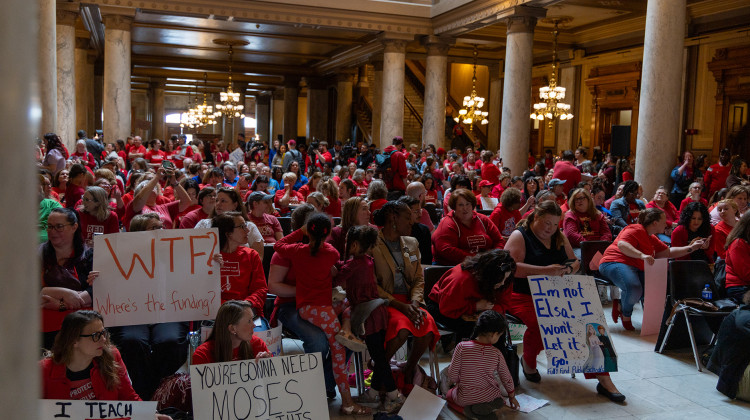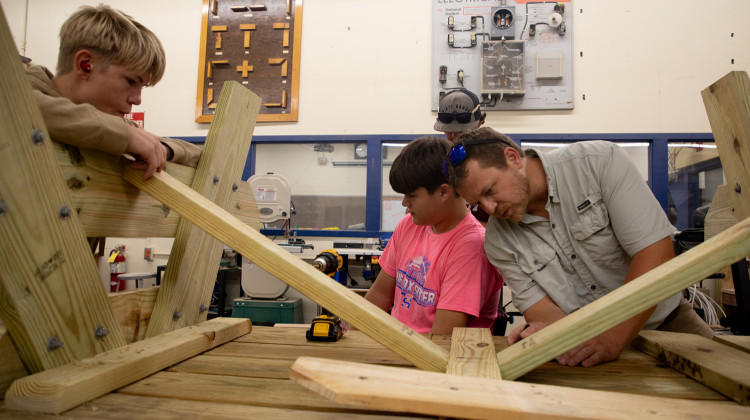
The number of Indianapolis high school graduates going directly to college is now nearly 20 percentage points below the rate in 2012.
Peter Balonon-Rosen/IPB NewsThe number of Indianapolis high schoolers going directly to college after graduation fell to about 47% in 2021, according to newly released data from the Indiana Commission for Higher Education. Enrollment began sliding more than a decade ago. And the number of graduates going directly to college is now nearly 20 percentage points below the rate in 2012.
Jason Kloth, CEO of Ascend Indiana, said that although he believes more people are questioning the value of higher education, those who graduate from college still earn higher wages on average than those who don’t.
“Everybody has that story about that person that went and got a college degree in Russian history and lives in their parents basement,” Kloth said. “But that's not the statistical reality.”
Kloth also pointed to the high cost of college as one reason why more young people are deciding not to enroll. Some families feel like they can’t afford tuition in a moment when other living costs are on the rise.
Statewide, the college-going rate stabilized after years of declines. About 53 percent of high schoolers who graduated in 2021 went straight to college.
Indiana lawmakers are working to make college more affordable. Those efforts include a new law that auto-enrolls eligible students in the 21st Century Scholars program, which provides low-income students with free tuition at state colleges and universities. But it could take years for those changes to take hold and lead to increased college enrollment.
Doneisha Posey is vice president of Black Onyx Management, an Indianapolis consulting company. She previously worked in higher education diversity, equity and inclusion. Posey said that one reason enrollment is falling is because students are still recovering from the pandemic.
Black students were hit particularly hard by the pandemic, Posey said. Young people who missed out on instruction may not feel academically prepared for higher education.
“As we think about the inequities that were already existing within our school systems, something that we have really been thinking about is the amount of learning that was missed for our students,” Posey said.
 DONATE
DONATE






 Support WFYI. We can't do it without you.
Support WFYI. We can't do it without you.